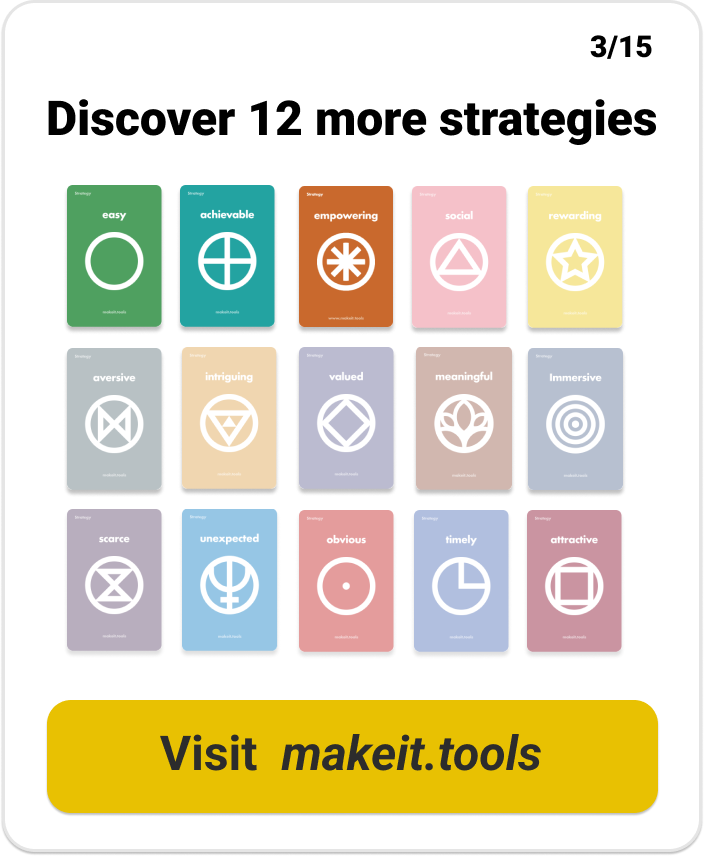Designing Behavioural Science-informed Health & Fitness apps.
How to use the Make it Toolkit to evaluate and design engaging fitness apps that create real-life behaviour changes.
15 Minutes

Estimated Duration:



Behavioural & Gamification Instructor & Designer
Massimo Ingegno

Gamification Designer, Educator and Researcher.
Zac Fitz-Walter


Hi there!
My name is Massimo Ingegno, I’m a behaviour & gamification university instructor and designer based in Bangkok.


Through this case study I hope to help you uncover the Make It Toolkit I have recently created in collaboration with friends and colleagues
Something I wish I had when I first started my behavioural design journey.
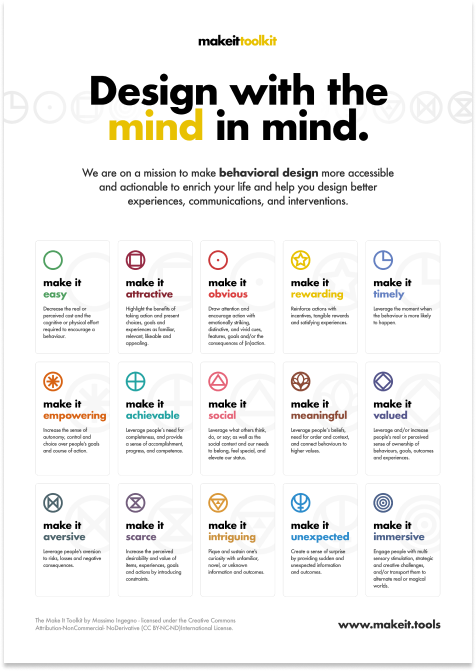

Feel free to download the poster for reference!

I wanted to identify the fundamental principles from behavioural economics, persuasion science, motivation and social psychology, habit formation, and game psychology and make them actionable.


The process of synthesis resulted into 15 high-level behaviour change strategies.


The tool is not intended to be prescriptive. It's meant to help designers, UX writers, and product managers ask the right questions when auditing and designing user experiences.


If you adopt a reactive approach, you can use Make It to optimise pre-formulated ideas or identify solutions to a certain problem (e.g., a drop -off point in the user journey) via a Behavioural Design Hypothesis.



You can also use it if you adopt a pro-active approach and propose solutions based on existing scientific insights.
I'll share with you an example at the end of the case study.


Each strategy has also a set of actionable techniques categorised into Nudges, Behavioural Change Techniques (BCTs), Game Techniques, and Incentives.


Today we'll cover 3 of the 15 strategies in the context if health and fitness app.


Driven by both the pandemic and the increased awareness of the importance of healthy lifestyles, the industry has been growing.
There are 350,000 health apps now in the market.


That’s the good news!


However... there’s a little evidence they actually work (they help us get healthier).

What’s unique about behaviour change apps is that we need to tackle 2 types of behaviour design challenges.
Behaviour Challenge #1
How can we engage and help people develop a habit of using an app?
Behaviour Challenge #2
Once they use the app, how can we help them create healthy habits outside of it and encourage real-life, positive changes?

So, let’s wear the Make it lenses and find out what levers we can use to be more intentional in our design.


As obvious as it may sound, sometimes the best behaviour change strategy is removing friction that prevents people from doing things they already want to do.


“Negative” friction is generally referred to as barriers. Barriers can be environmental and/or about the person. These are a few common examples in the context of health and fitness.


“Negative” friction is generally referred to as barriers. Barriers can be environmental and/or about the person. These are a few common examples in the context of health and fitness.


Since people are inherently lazy, removing actions and steps percived as hassle is a key technique to consider.


One of the most obvious ways health and fitness apps do this is by removing the need to manually input data (if you ever kept a step count diary, you know what I’m talking about)


Take MyFitnessPal, for example. With a large recipes database they make the (tedious) process of tracking meals as frictionless as possible. A (Premium) feature also allows you to log meals by scanning them with the phone camera.



Yay!

You collected your 1st technique (out of 15)
Remove Steps
You collected your 1st technique (out of 15)
Keep track of them in the upper left side of the screen.
TECHNIQUES COLLECTED

















Make it Easy also refers to the overall usability of the user experience.
An effective evaluative tool is the The System Usability Scale (SUS).
TECHNIQUES COLLECTED

















A recent study of diet-tracking apps used SUS to evaluate their perceived ease of use, and found that barcode scanning, photo entry, lists of frequently entered food items, and auto-completion greatly increase the ease in which items can be entered.
TECHNIQUES COLLECTED















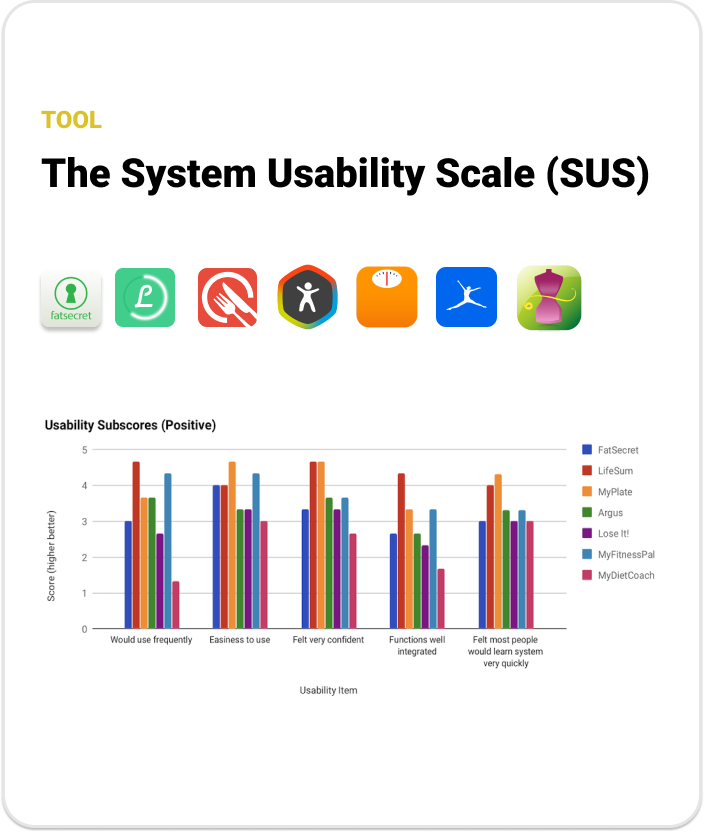

TECHNIQUES COLLECTED















And the winner is ... LifeSum!
Being a very lazy person, I particularly love that I can tell Siri with a voice command to log any glasses of water I drink!




TECHNIQUES COLLECTED
















Removing the hassle factor is not only at the product level. Peloton largely owes its success to the convenience of being able to take a top-notch studio cycling class on a high tech bike at home any time you want.

TECHNIQUES COLLECTED















In fact, studies have shown that longer commutes that are generally perceived as inconvenient, lead to fewer visits to fitness centers.

TECHNIQUES COLLECTED















Making the action as easy as possible makes it more likely to build habits.


TECHNIQUES COLLECTED















When it comes to building habits it is also imoprtant to have a stable context. For example, doing a certain routine at the same time and/or place.


TECHNIQUES COLLECTED















Lewin’s equation is what I call the 1st Law of Behaviour.
3 more to go!



TECHNIQUES COLLECTED















Let’s say you make it to the gym. What workout should you do? If you don’t have a plan to follow, that might be another friction point.


TECHNIQUES COLLECTED















While it's good to have options, too many can result in a phenomenon called “Decision Paralysis”.
Health and fitness apps can help us by limiting choice and avoid making us thumb through an entire library of videos before getting on our feet.



TECHNIQUES COLLECTED















A good example is FitBod, whose founder notes: “The simplicity of a single, ‘next workout to do’ really helps the gym-goer quickly solve their psychological uncertainty”.



TECHNIQUES COLLECTED















Another example is Peloton. Despite the ability to filter options and data-driven recommendations, as it continues to grow and add more and more classes, the problem emerging for users is ..




TECHNIQUES COLLECTED















The paradox of choice! Rather than figuring out which class to take, you may just decide to call the whole thing off and not exercise at all.



TECHNIQUES COLLECTED
















Sounds familiar? Yes - the endless scrolls on Netflix..
Netflix has thousands of titles available, and while they have an excellent personalisation algorithm that curates content, it’s still mentally exhausting to scroll through all those tiles to find exactly what you’re looking for.


TECHNIQUES COLLECTED
















It’s why Netflix recently launched “Play Something”; a new feature that just picks something for you to watch with one click (similar to traditional TV).


TECHNIQUES COLLECTED
















This is the paradox. We want choices, but at the same time the fear of getting stuck in this endless loop of indecision, make us freeze.


TECHNIQUES COLLECTED
















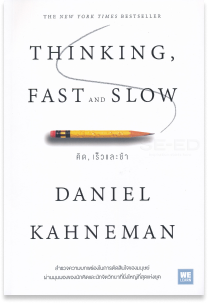
Careful though. Not all friction is negative!
Sometimes we do things that we might regret.
That’s because we often rely on System 1 thinking to make quick and oftentimes suboptimal (irrational) decisions.



TECHNIQUES COLLECTED















For example, while training for my first half-marathon I was advised by a doctor to take a break to avoid injuries. But I felt I was too invested. I was 2 weeks away from the race. So I decided to do the race. I got a knee injury, and I’ve never been able to race again. 😭



TECHNIQUES COLLECTED















Clearly not all engagement is good. Imagine how cool it would have been if the app I was using at that time had a friction point to help me make the right decision?
That’s one of the core objectives of behavioural design after all.



TECHNIQUES COLLECTED















Regrettable outcomes may be trivial but can also negatively affect the user experience. Consider the case of having to wait at the traffic light. A user might accidentally stop the activity instead of pausing it.



TECHNIQUES COLLECTED















Adding one more decision points in the user flow or extra effort can help users slow down and prevent errors and undesirable outcomes (also called “Rational Overrides” or “System 2 Nudges”)



TECHNIQUES COLLECTED















For example, NRC asks users to pause their workout first, and only later to choose between stopping (which requires holding the button for 2 seconds) or resuming.



TECHNIQUES COLLECTED















Adidas Running, direcly asks users to slide the stop the run which requires a bit more effort.



TECHNIQUES COLLECTED















RunKeeper asks users to confirm that they want to complete their activity.



TECHNIQUES COLLECTED















While tracking behavioural data can provide helpful feedback and increase one’s awareness, research suggests that for most people, this kind of “unrefined” feedback (e.g., step count, calories in and out) does not translate into long-lasting behaviour change.



TECHNIQUES COLLECTED















In fact, studies indicate that health and fitness apps are mostly effective with people who already were doing certain behaviours already before adopting the new techonology.



TECHNIQUES COLLECTED















A recent meta analysis found that fitness apps can be effective tools, but only when used as part of guided behaviour change interventions (aka whe techniques that directly aim to influence behavior are implemented).



TECHNIQUES COLLECTED
















That is great news!
However..


TECHNIQUES COLLECTED
















Other studies suggests that both Behavioral Change Techniques (BTC) and Gamification Techniques (GT) are lacking in most health and fitness Apps (with only a few common techniques being leveraged).


TECHNIQUES COLLECTED















Not only does “unrefined” feedback seems not to boost our motivation, but when it comes to feedback related to our health (and finances) we often avoid it when we expect it to be negative (e.g., a lack of progress)



TECHNIQUES COLLECTED















A good example of this effect is the love-hate relationship many of us have with scales.



TECHNIQUES COLLECTED
















I think you’d agree that even if a behaviour is easy to do... we won’t necessarily do it.
Even people with a fitness center at work or a treadmill in the basement fail to exercise.


TECHNIQUES COLLECTED















Besides facilitating the behaviour then, we need to take into account and leverage motivation.
This is described in the BJ Fogg model, what i call the 3rd Law of Behaviour.



TECHNIQUES COLLECTED















Think of motivation as the fuel that drives action. Motivation varies both in intensity (low and high) and “quality”. Quality refers to whether we are intrinsically or extrinsically motivated.
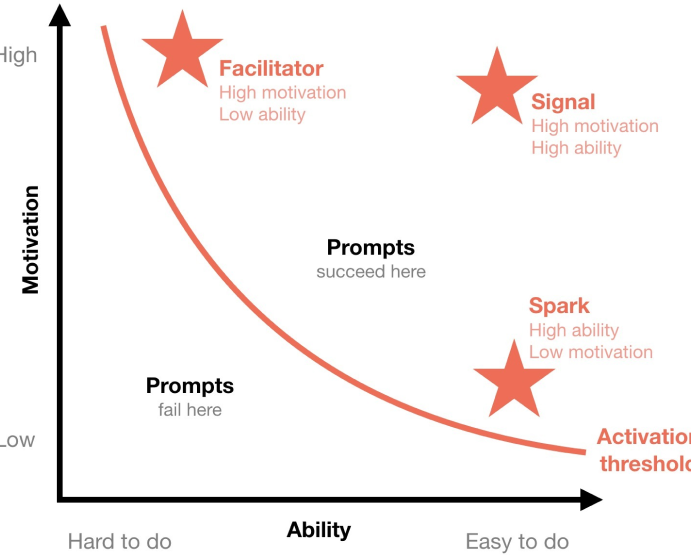


TECHNIQUES COLLECTED
















Hey there Massimo!
I don’t mean to pry but it looks like you’ve been sitting down now for a while...


TECHNIQUES COLLECTED
















Seeing as we’re talking about health and fitness... I read a study recently that says prolonged time spent in sedentary behaviours like sitting can be as a risk factor for cardio metabolic risk and all-cause mortality 😱


TECHNIQUES COLLECTED
















So feel free to tag me in if you want want to take a quick break and stretch those legs?
You’re right Dr. Zac,
Bye for now!

TECHNIQUES COLLECTED
















Hi there, nice to meet you! 👋
My name is Zac. I’m a gamification designer, educator and researcher based in Australia.

TECHNIQUES COLLECTED
















I’m interested in how game design principles and patterns can be used to create more engaging user experiences and digital products.


As Massimo mentioned, while simplifying tasks may increase our sense of competence (by not overwhelming us), we also need another set of techniques to help sustain behaviours and create engaging experiences.

TECHNIQUES COLLECTED
















Competence describes our intrinsic need to try and exert control over our lives and outcomes, develop skills and abilities, and experience mastery

TECHNIQUES COLLECTED
















While that’s our innate tendency, it should not be taken for granted. We must design for competence. To help us with this, we have three excellent approaches at our disposal. These include...


TECHNIQUES COLLECTED
















Simply put, we need to do our best to help users feel successful and accomplished by considering what happens before and after behaviours are performed.
This is one of the key learnings from game design.

TECHNIQUES COLLECTED
















Let’s look at a few practical ways to do that...

TECHNIQUES COLLECTED
















The first step is to create clear goals.
Goals give us a clear sense of direction to help guide our behaviours.


TECHNIQUES COLLECTED
















Goals can be behaviour or outcome-oriented.
They are both important types of goals and it helps if we can make them work together.


TECHNIQUES COLLECTED
















However, health and fitness science suggests that exercise should not be seen as a weight-loss tool.
For example, sometimes exercising too much can trigger compensatory behaviours (e.g., eating more)


TECHNIQUES COLLECTED
















Ideally goals, should be time-bounded in the short, medium and long-term. This is also a principle of good game design - just think of many Mario games where your short term goal is to finish a level, medium term goal to finish a world and your long-term goal is to save the princess.


TECHNIQUES COLLECTED
















Examples of time-bounded goals include Google Fit which provides users with a clear short-term daily goal AND a medium weekly goal in the form of Heart Points. However, these apps don’t often have a long-term end goal. They are made to be “infinite games”.


TECHNIQUES COLLECTED
















Some apps take it a step further* and have focused their value proposition to a provide a very specific and finite long-term end goal.
*pun definitely intended! 😁


TECHNIQUES COLLECTED
















For example NHS Couch to 5K is a behaviour change program designed to help beginners go from walking to running 5km in 9 weeks.


TECHNIQUES COLLECTED
















The need for time-bounded goals also partly explains why 30-day challenges can be effective in building healthy habits.


TECHNIQUES COLLECTED
















It’s not surprising that some of the top rated fitness apps like 30 Day Workout at Home have decided to focus on just that.


TECHNIQUES COLLECTED
















Another really important consideration when creating goals is to make sure the goals are achievable for each individual.


TECHNIQUES COLLECTED

















This is where personalisation can be used to help create goals that match a user’s competence. For example, StepBet syncs and reviews their users’ existing health data to create a step goal tailored to their skill level.

TECHNIQUES COLLECTED
















Once a goal is set, it is crucial to provide guidance along the way. A way of supporting unskilled or new users, is by showing them clearly how to perform the desired behaviour.


TECHNIQUES COLLECTED
















Many fitness apps, such as BIM, provide video demonstrations of how to perform specific workouts so users can follow along.


TECHNIQUES COLLECTED
















A feeling of competence also requires a sense of progress which can be provided in different ways.
Designing graded tasks is a great approach, especially in the context of fitness, which requires our body to adapt to new lifestyles.


TECHNIQUES COLLECTED
















FitBit does this well by creating a personalised goal based on your average step count. It also backs up this goal by explaining the benefits of such a lifestyle change.


TECHNIQUES COLLECTED
















By personalising the goal you’re creating a challenge that suits us as individuals. This is important because we crave optimal challenges, which are activities that match our current skill level. This ties back into feelings of competence and give us a chance to test out skills.


TECHNIQUES COLLECTED
















Optimal challenge is particularly important in the context of health and fitness. When people do the same workout over and over again, they may stop seeing progress or become bored with the workout. So make sure to increase the difficulty over time as their skill improves to keep them challenged!


TECHNIQUES COLLECTED
















Making sure the behaviour is followed by a positive consequence is a core concept of behavioural design... and our last law of behaviour for today!




Congrats! You collected the 4 laws of human behaviour! Always keep them in mind when evaluating or designing interventions.



8 more techniques to go!


It’s important to provide feedback performance otherwise we don’t know if we’re on track to achieving our goal or not. Realtime feedback can help give us a sense of how well we performed and guide our future behaviour and choices.
TECHNIQUES COLLECTED


















Strava does a great job of giving performance feedback every time a workout is completed, not only providing workout stats such as distance and average pace, but also highlighting other useful information such as grade adjusted pace and relative effort.
TECHNIQUES COLLECTED


















The combination of feedback and goals creates a sense of progress. It’s super important to visualise progress in a useful way that breaks down the a goal into stages so we know how close we are to our goal.
TECHNIQUES COLLECTED


















I love a good progress bar for visualising progress and Apple Fitness delivers with some very clear and attractive Activity rings. A quick glance at your Apple Watch and you can see how you’re progressing with your move, exercise or stand goals each day.
TECHNIQUES COLLECTED


















Designs like the Apple’s “closing the ring” also leverage the so-called “Zeigarnik effect”, which suggests we tend to recall unfinished tasks better than completed ones.
TECHNIQUES COLLECTED


















TECHNIQUES COLLECTED















Levels or ranks can be a good way to visualise long-term progress if they’re aligned with performance.
Nike Run Club, for example has designed 7 levels based on lifetime distance run.



TECHNIQUES COLLECTED















In addition to feedback, guidance can help. This is particularly important for newbies and first-time experiences. A great onboarding provides a good first impression and increase the likelihood users will continue their health journey.



TECHNIQUES COLLECTED















For example, Nike Run Club offers Guided Runs (e.g., First Run, First Speed Runs) with pre-recorded audio support to help build skills and confidence, teaching users how to run properly!



TECHNIQUES COLLECTED
















This helps new runners ease into the new behaviour, creating a level of difficulty that matches their competence. Imagine committing to your first run and being made to run a marathon. You’d never want to run again! Instead this guided approach can create a positive first success.


TECHNIQUES COLLECTED















Almost done! you have already collected 11 of 15 techqniques.



TECHNIQUES COLLECTED















The 12th one It’s called the “goal-gradient effect”.
When we are close to a goal we experience a boost in motivation.



TECHNIQUES COLLECTED















Designers should take this into account when visualising goals (e.g., adding milestones in long and effortful journeys) and prompting people (e.g., identifying the right moment).



TECHNIQUES COLLECTED















And of course, it’s important to acknowledge and celeberate users’ accomplishments.
If people take time to tap themselves on the back, they will associate a good feeling with the habit and start looking forward to it.



TECHNIQUES COLLECTED















A good example is the Fabulous app, which asks you to take some time to celebrate.
Speaking of time... it’s about time we heard from Massimo again!


TECHNIQUES COLLECTED















Hi! I’m back!
The 3rd strategy we’ll cover today reminds us that people also need to feel in control of their choices



TECHNIQUES COLLECTED















Autonomy is key in behaviour change.
For example Katy Milkman found that flexbility in exercise routines is key to form long-lasting habits.



TECHNIQUES COLLECTED















Jesse Schell, author of the Art of Game Design distingsuishes “wanna” versus a “hafta” behaviours. “Haftas” are things people are obligated to do, as opposed to things they “wanna” do.



TECHNIQUES COLLECTED















Unfortunately, many behaviour change products fail to engage us because they feel like “haftas,” things people are obligated to do, as opposed to things they want to do.



TECHNIQUES COLLECTED















When our choices are restricted, we respond with what psychologists call “reactance”. We take shortcuts, cheat, and in the case of many apps, stop using them and uninstall them. We don’t like to be controlled!



TECHNIQUES COLLECTED
















There are several ways we can respect people’s autonomy.

TECHNIQUES COLLECTED
















One is to enable users to set their own goals and adjust them along the way.
When that happens we also tend to have a stronger sense of ownership.


TECHNIQUES COLLECTED
















For example, Run Keeper enable users to set their own goals (in terms of weight loss, workout frequency and more).


TECHNIQUES COLLECTED
















Similarly, notifications are often percived as annoyance as they lack relevance or are not timely.
One way is to enable users to customise their own.


TECHNIQUES COLLECTED
















For example, Live class app Yogaia found that new sign-ups who activated the daily reminder feature were 48% more likely to attend a class within the 1st week.


















Congrats! You collected 15/200 applicable techniques.

Congrats! You've collected all 15 techniques of this case study! 🎉


Epic work! 🎉
You have completed the case study!

Yep, good job!
Let’s do a quick summary of what you’ve learned.

Today we covered just 3 of the 15 strategies of the Make it toolkit. Zac and I hope you appreciate that just by simplifying actions and by making users feel accomplished and free to choose we can help people achieve health goals. High five! ✋


Did you like this case study? Zac and I would love to hear your feedback. 🙏
Finally, you can check out all the strategies of the Make it tookit on our website! 👀

